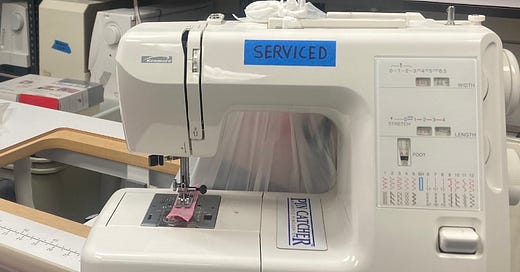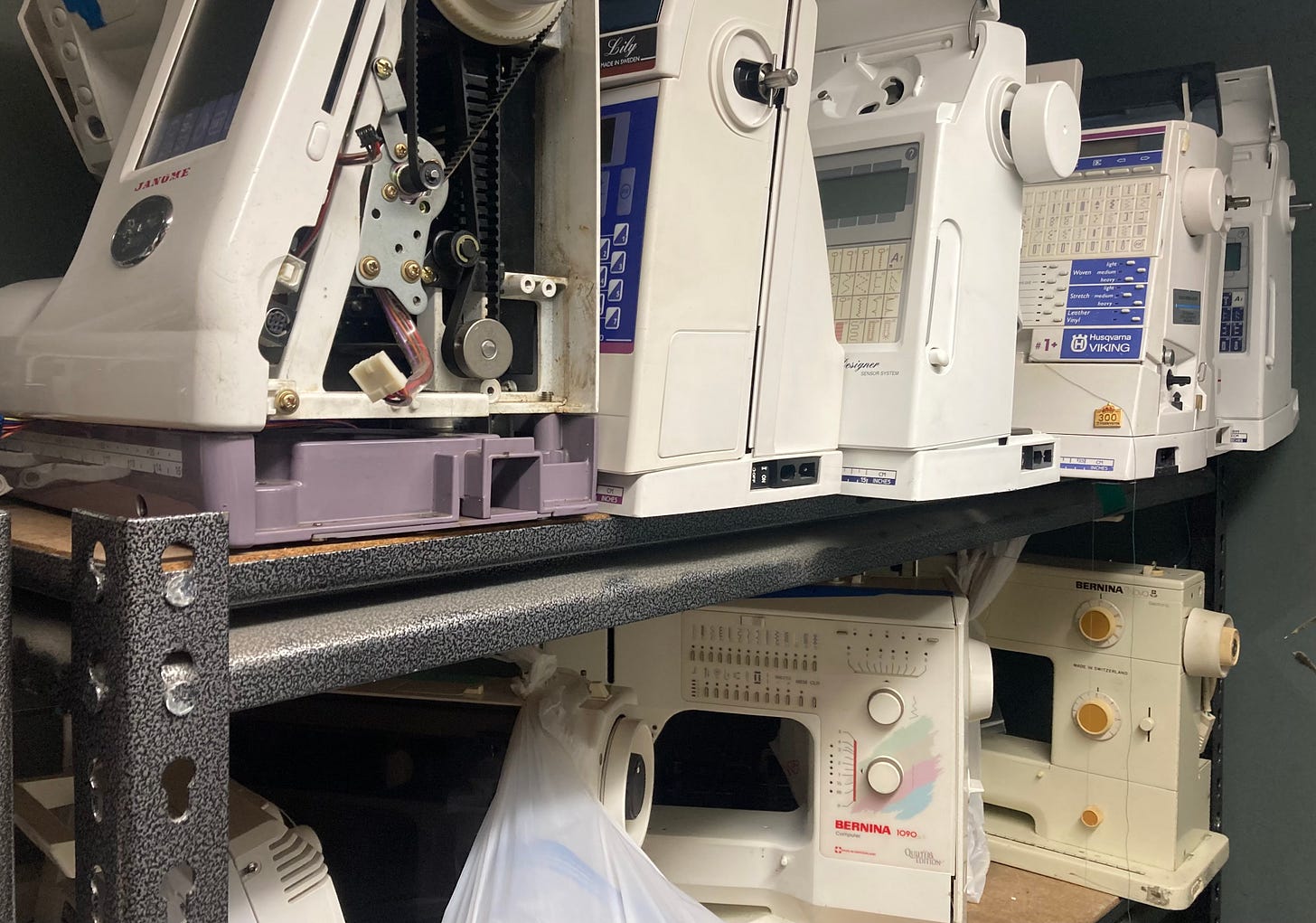Greetings everybody,
Today’s edition of The Sewing Machine Newsletter was written by my father, Dan Schoenberg. The article is all about trade-ins and how he, as the owner of a sewing machine dealership for 30+ years, views trade-ins. It’s an invaluable source of information for anybody in the market for a new machine, so many thanks to him for dropping this knowledge.
We hope you find it helpful.
What’s Your Trade-In Worth?
A common and fair question that we often answer is, "What would you give me for my trade-in?"
There are many factors that I consider when giving value to a trade-in. The first questions that I have to ask myself is, “Do I want to re-sell your machine at all?”, and if so, “What will be I be able to sell it for?”
I would estimate that half of the machines we take in trade, we do not re-sell. We still give our customers a nominal trade-in value of $20-$25 to apply towards their new machine. These machines usually consist of older Singer machines, machine brands or models that do not meet our standard for quality, and machines where required parts are no longer available. This last reason is an important one to note because these are often high quality machines that my shop personally sold to the customer many years ago. The Sewing Machine Shop has been in business for over 30 years. We have sold thousands of machines, many of which the manufacturer has discontinued making certain common parts for. The Pfaff brand is one of those. The company has been bought and sold several times in the past decade and I am now seeing many very common Pfaff replacement parts become unavailable. A simple $1 needle plate clip is no longer being made rendering a $4000.00 machine unusable. The reason I point this out is that if your machine is getting in that 15-25 year range it may have a good trade-in value today but very little trade-in value tomorrow should a needed part be unavailable. We are experiencing this with both Pfaff and Bernina.
Machines that have the best trade-in values are also the machines with the best re-sale value. As you would guess, these brands include Bernina, Janome, and Baby Lock purchased in the past decade or so. We determine trade-in value based on what we think the machine will sell for within a 60-90 day period. It is important for the customer to know that when we take in a trade-in, we need to service the machine (tune-up), warranty it, teach the new owner how to use it, and make a reasonable profit. For example, if I feel I can sell your machine for $800 within 90 days, I might give a trade-in of $500 so that I can pay for the service, lessons and a profit.
Factors that can increase or decrease a trade-in? If the customer is considering a top-of-the-line machine, I may be more generous with my trade-in value. If the machine is missing key accessories (instruction book, hard case, presser feet etc.) then I may deduct from the trade-in value.
I hope this article has shed light on the process. If you’re in the neighborhood, we would love to have you look at the wonderful new machines we have and bring in your old machine while you're at it. We will be happy to let you know its trade-in value.
Thank you for reading.
If you like this article and find it helpful, please drop a comment in the comment section below, or share with your fellow sewists.
-Cale & Dan Schoenberg







Your article really gave me pause. The used Pfaff that I thought I wanted is probably in the category of parts no longer being available. I understood the “trade in” value, but did not consider parts not being available for the vintage machines. Thank you
I love your pets as I’m not sure where you lose I can this valuable information